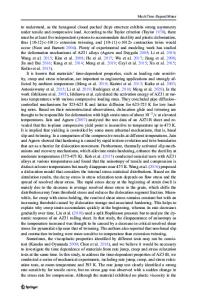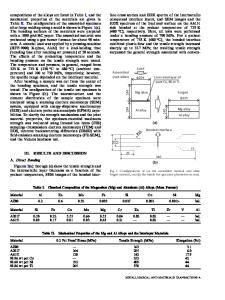Ultrasonic welding of AZ31B magnesium alloy
- PDF / 1,582,714 Bytes
- 7 Pages / 585 x 783 pts Page_size
- 43 Downloads / 340 Views
troduction Increased use of lightweight materials in automobiles can directly contribute to the goal of cutting greenhouse gas emissions by reducing fuel consumption. Magnesium alloys have received much attention in this context in the last decade because of their low densities and high specific strengths.1 However, joining of Mg alloys by conventional fusion welding methods is problematic, resulting in defects such as hot cracking and porosity from nonequilibrium solidification and segregation of impurity elements.2,3 Many alternative joining methodologies such as adhesive bonding,4 brazing,5 riveting,6 and solid-state joining7,8 are being investigated for different applications. Ultrasonic welding (UW)9 is a solid-state joining method that produces weld joints by localized high-frequency tangential vibration under moderate clamping pressure. In ultrasonic welding, a sonotrode is a tool that generates ultrasonic vibration and delivers energy to the workpiece. The welding cycle is typically short (
Data Loading...











